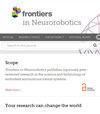Fine-grained image classification method based on hybrid attention module
IF 2.6
4区 计算机科学
Q3 COMPUTER SCIENCE, ARTIFICIAL INTELLIGENCE
引用次数: 0
Abstract
To efficiently capture feature information in tasks of fine-grained image classification, this study introduces a new network model for fine-grained image classification, which utilizes a hybrid attention approach. The model is built upon a hybrid attention module (MA), and with the assistance of the attention erasure module (EA), it can adaptively enhance the prominent areas in the image and capture more detailed image information. Specifically, for tasks involving fine-grained image classification, this study designs an attention module capable of applying the attention mechanism to both the channel and spatial dimensions. This highlights the important regions and key feature channels in the image, allowing for the extraction of distinct local features. Furthermore, this study presents an attention erasure module (EA) that can remove significant areas in the image based on the features identified; thus, shifting focus to additional feature details within the image and improving the diversity and completeness of the features. Moreover, this study enhances the pooling layer of ResNet50 to augment the perceptual region and the capability to extract features from the network’s less deep layers. For the objective of fine-grained image classification, this study extracts a variety of features and merges them effectively to create the final feature representation. To assess the effectiveness of the proposed model, experiments were conducted on three publicly available fine-grained image classification datasets: Stanford Cars, FGVC-Aircraft, and CUB-200–2011. The method achieved classification accuracies of 92.8, 94.0, and 88.2% on these datasets, respectively. In comparison with existing approaches, the efficiency of this method has significantly improved, demonstrating higher accuracy and robustness.基于混合注意力模块的精细图像分类方法
为了在细粒度图像分类任务中有效捕捉特征信息,本研究采用混合注意力方法,引入了一种新的细粒度图像分类网络模型。该模型以混合注意力模块(MA)为基础,在注意力消除模块(EA)的辅助下,可以自适应地增强图像中的突出区域,捕捉更详细的图像信息。具体来说,对于涉及细粒度图像分类的任务,本研究设计的注意力模块能够将注意力机制应用于通道和空间维度。这样就能突出图像中的重要区域和关键特征通道,从而提取独特的局部特征。此外,本研究还提出了一种注意力消除模块(EA),可根据识别出的特征消除图像中的重要区域,从而将注意力转移到图像中的其他特征细节,并提高特征的多样性和完整性。此外,本研究还增强了 ResNet50 的池化层,以扩大感知区域,并提高从网络较低深度层中提取特征的能力。为了实现细粒度图像分类的目标,本研究提取了多种特征,并将它们有效合并,以创建最终的特征表示。为了评估所提出模型的有效性,我们在三个公开的细粒度图像分类数据集上进行了实验:斯坦福汽车》、《FGVC-飞机》和《CUB-200-2011》。该方法在这些数据集上的分类准确率分别为 92.8%、94.0% 和 88.2%。与现有方法相比,该方法的效率显著提高,表现出更高的准确性和鲁棒性。
本文章由计算机程序翻译,如有差异,请以英文原文为准。
求助全文
约1分钟内获得全文
求助全文
来源期刊

Frontiers in Neurorobotics
COMPUTER SCIENCE, ARTIFICIAL INTELLIGENCER-ROBOTICS
CiteScore
5.20
自引率
6.50%
发文量
250
审稿时长
14 weeks
期刊介绍:
Frontiers in Neurorobotics publishes rigorously peer-reviewed research in the science and technology of embodied autonomous neural systems. Specialty Chief Editors Alois C. Knoll and Florian Röhrbein at the Technische Universität München are supported by an outstanding Editorial Board of international experts. This multidisciplinary open-access journal is at the forefront of disseminating and communicating scientific knowledge and impactful discoveries to researchers, academics and the public worldwide.
Neural systems include brain-inspired algorithms (e.g. connectionist networks), computational models of biological neural networks (e.g. artificial spiking neural nets, large-scale simulations of neural microcircuits) and actual biological systems (e.g. in vivo and in vitro neural nets). The focus of the journal is the embodiment of such neural systems in artificial software and hardware devices, machines, robots or any other form of physical actuation. This also includes prosthetic devices, brain machine interfaces, wearable systems, micro-machines, furniture, home appliances, as well as systems for managing micro and macro infrastructures. Frontiers in Neurorobotics also aims to publish radically new tools and methods to study plasticity and development of autonomous self-learning systems that are capable of acquiring knowledge in an open-ended manner. Models complemented with experimental studies revealing self-organizing principles of embodied neural systems are welcome. Our journal also publishes on the micro and macro engineering and mechatronics of robotic devices driven by neural systems, as well as studies on the impact that such systems will have on our daily life.
 求助内容:
求助内容: 应助结果提醒方式:
应助结果提醒方式:


